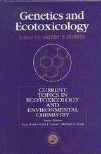Papers in the Biological Sciences

Valery Forbes Publications
Document Type
Article
Date of this Version
2008
Abstract
The hypothesis that the nature and force of PAH stress responses from plankton systems are coupled to the nutrient status of that system was tested in a mesocosm experiment. Four treatments were applied consisting of control (Cn), pyrene exposed (Py). nutrient spiked (Nu), and nutrient spiked and pyrene exposed (NuPy) groups in replicate bags (n = 3) representing plankton communities including bacteria, phytoplankton and zooplankton. Regardless of nutrient status, all the Py mesocosms were affected directly with decreases in chlorophyll α concentrations to 20 % of control values on Day 1. Primary production was also significantly lower (< 50 %) than Cn communities in both Py and NuPy communities after the first pyrene exposure. Indirect effects were observed as increased bacterial activity due to nutrient release from algal death, thereby channelling growth to another trophic level. With time the plankton system became top-down controlled, dominated by zooplankton, which was also the trophic group experiencing the longest lasting effect on structure. The occurrence of late effects in the zooplankton communities were seen in all treatments, but the magnitude of the effects was dependent on the nutrient status, most probably because of a larger trophic transfer of the contaminant. To improve our understanding of contaminant effects on food webs in natural communities, it is imperative that interactions between trophic levels in relation to abiotic factors are investigated.


Comments
Published in Marine Ecology Progress Series 363:121-130 (2008). Copyright 2008, Inter-Research. Used by permission.